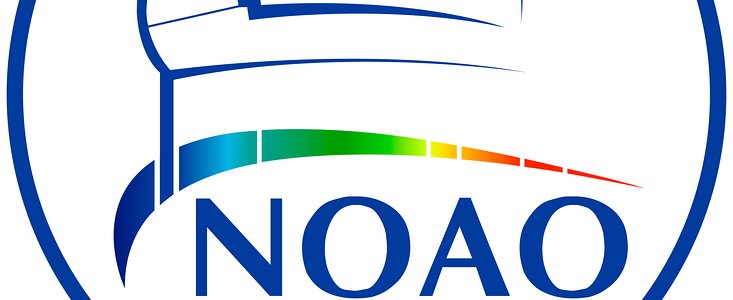Kitt Peak Astronomers Observe Powerful Gamma-Ray Burst
25 March 1999
Astronomers using the National Science Foundation's (NSF) Kitt Peak National Observatory (KPNO), near Tucson, Arizona, contributed important optical observations of a Gamma-Ray Burst (GRB) discovered on 23 January 1999. The KPNO observations of this particularly powerful and well-observed GRB are included in articles appearing in current issues of the journals Science and Nature. This event was the first GRB detected simultaneously at optical and gamma-ray wavelengths, and may provide the first clear evidence that GRBs emit a stream, or jet, of photons directed out into space like a searchlight.
As coordinator for the National Optical Astronomy Observatories (NOAO) Gamma-Ray Burst Follow-up Program, KPNO astronomer James Rhoads received initial word of the outburst. He quickly contacted astronomers whose programs were in progress at the NSF's Mayall 4-meter Telescope and Wisconsin Indiana Yale NOAO (WIYN) Telescope on Kitt Peak and requested they interrupt their scheduled observing to record the fading light from the powerful event. A team led by University of Arizona astronomer Chris Impey agreed to observe the GRB with their 4-meter observing time; a Target of Opportunity program led by astronomer Craig R. Robinson from NASA's Marshall Space Flight Center was put into action at the WIYN. Both telescopes were successful in recording the optical emission from this GRB, named GRB 990123 for its discovery date, one of the most powerful events so far recorded. An article analyzing an extensive set of GRB 990123 observations including those from the WIYN and 4-meter telescopes, authored by University of Amsterdam astronomer T.J. Galama and other astronomers, including Rhoads, Impey, and Robinson, will be published in the April 1, 1999 issue of Nature. Galma et al show that the physical mechanism powering the early optical flash is distinct from both the gamma ray emission and the optical= afterglow.
On January 26th, after two nights of cloudy weather, KPNO astronomers Charles Claver and Travis Rector continued to monitor GRB 990123 using the NSF's Mayall 4-meter and 0.9-meter telescopes at Kitt Peak National Observatory. Their observations of the GRB's afterglow have been combined with observations at many wavelengths from other observatories around the world and will be reported in the March 26, 1999, issue of Science. The paper is authored by Alberto J. Castro-Tirado (Laboratorio de Astrofísica Espacial y Física Fundamental, INTA, Madrid, and Instituto de Astrofísica de Andulucia, IAA-CSIC, Granada, Spain) and other astronomers, including Rhoads, Claver, and Rector.
Gamma-Ray Bursts, discovered in 1967, are the most powerful events known to occur in the universe. Over the past 30 years, more than 2000 GRBs have been detected, primarily by orbiting satellites surveying the heavens in search of high-energy x-rays and gamma-rays. The extensive observations of GRB 990123 show that the rate of decrease in the light output of the afterglow increased after 1.5 - 2 days. Data contributed by Claver and Rector fall in this critical time period and are interpreted as evidence that the gamma rays are a stream, or jet, of photons directed out into space, and, that GRBs are seen only when the stream is directed toward the observer. If other well-observed GRBs confirm this hypothesis, GRBs may be far more common than previously thought.
Notes
Kitt Peak National Observatory is one of four divisions of the National Optical Astronomy Observatories (NOAO). NOAO is operated by the Association of Universities for Research in Astronomy (AURA), Inc., under Cooperative Agreement with the National Science Foundation.
Contacts
Dr. James Rhoads
Tel: 1-520-318-8205
Email: jrhoads@noao.edu
Dr. Travis A.
Rector Astronomer, NOAO
Tel: (520) 318-8256
Email: rector@noao.edu
Dr. Chuck Claver
Tel: 1-520-318-8447
Email: cclaver@noao.edu
Dr. Bruce Bohannan
Tel: 1-520-318-8157
Email: bbohannan@noao.edu
About the Release
| Release No.: | noao9902 |
| Legacy ID: | NOAO 99-02 |
| Name: | GRB 990123 |
| Facility: | Nicholas U. Mayall 4-meter Telescope, WIYN 0.9-meter Telescope |
| Science data: | 1999Sci...283.2069C |



